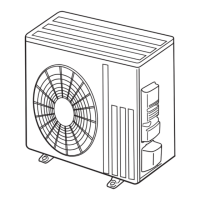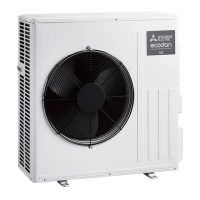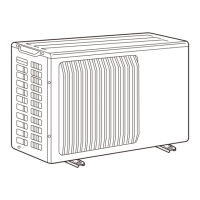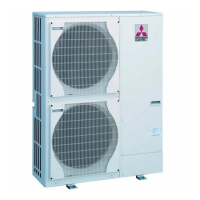
Do you have a question about the Mitsubishi Electric SUZ-SWM40VA and is the answer not in the manual?
| Cooling Capacity | 4.0 kW |
|---|---|
| Cooling Capacity (BTU/h) | 13600 BTU/h |
| Refrigerant | R410A |
| Power Supply | 220-240 V |
| Voltage (V) | 220-240 V |
| Outdoor Unit Dimensions (HxWxD) | 550 x 800 x 285 mm |
| Phase | Single |
| Operating Temperature Range (Cooling) | -15°C to 24°C |
| Operating Temperature Range (Heating) | -15°C to 24°C |
Explains the meaning of warning and information symbols related to unit safety.
Emphasizes disconnecting power before accessing terminals and following general safety rules.
Provides comprehensive safety guidelines for installation, relocation, repair, and general servicing of the unit.
Outlines essential checks and procedures for safe servicing of units with flammable refrigerants.
Details precautions for working on sealed components, ensuring safety and protection levels are maintained.
Specifies procedures for repairing intrinsically safe components in flammable atmospheres.
Ensures cabling is checked for wear, corrosion, and adverse environmental effects.
Details methods and precautions for detecting flammable refrigerant leaks safely.
Covers the use of electronic detectors and fluids, and procedures for handling leaks.
Explains the safe procedures for removing and evacuating refrigerant during servicing or decommissioning.
Outlines requirements for safe and correct refrigerant charging, including pressure testing and leak checks.
Provides steps for safely decommissioning the unit, including refrigerant recovery and labeling.
Specifies labelling requirements for de-commissioned equipment, especially for flammable refrigerants.
Details safe practices for recovering refrigerant, using appropriate cylinders and equipment.
Specifies the minimum installation area (Amin) based on refrigerant amount for safe operation.
Details installation requirements for spaces with a depression height not exceeding 0.125 meters.
Provides guidelines for creating adequate ventilation openings for safe installation.
Specifies the maximum allowable length and height difference for refrigerant piping.
Details the additional refrigerant charge required based on piping length for R32 units.
Step-by-step instructions for pumping down the refrigerant system when relocating or disposing of the unit.
Describes the ON/OFF control logic for the outdoor fan motor interlocking with the compressor.
Explains the control logic for the 4-way reversing valve (R.V. coil) in cooling and heating modes.
Details how main sensors interact with and control actuators like compressor, LEV, fan motor, and R.V. coil.
Highlights essential safety precautions and checks before starting troubleshooting procedures.
Outlines the steps for troubleshooting, including checking indicator lamps and P.C. board conditions.
A table listing symptoms, abnormal points, conditions, and remedies for various unit errors.
Guidance on performing self-diagnosis procedures for the unit's components.
Defines resistance and operational criteria for diagnosing main unit parts.
Flowcharts guiding the diagnosis of specific issues like inverter/compressor problems and thermistors.
Provides checks and procedures to identify and resolve electromagnetic noise interference with TV sets or radios.
Detailed steps and illustrations for safely removing the outer cabinet of the unit.
Instructions for disconnecting and removing the inverter assembly and its P.C. board.
Steps for disconnecting and removing the reversing valve (R.V.) coil.
Procedure for removing discharge, defrost, heat exchanger, and ambient temperature thermistors.
Instructions for disconnecting and removing the outdoor fan motor and propeller.
Steps for recovering refrigerant and removing the compressor and 4-way valve.












